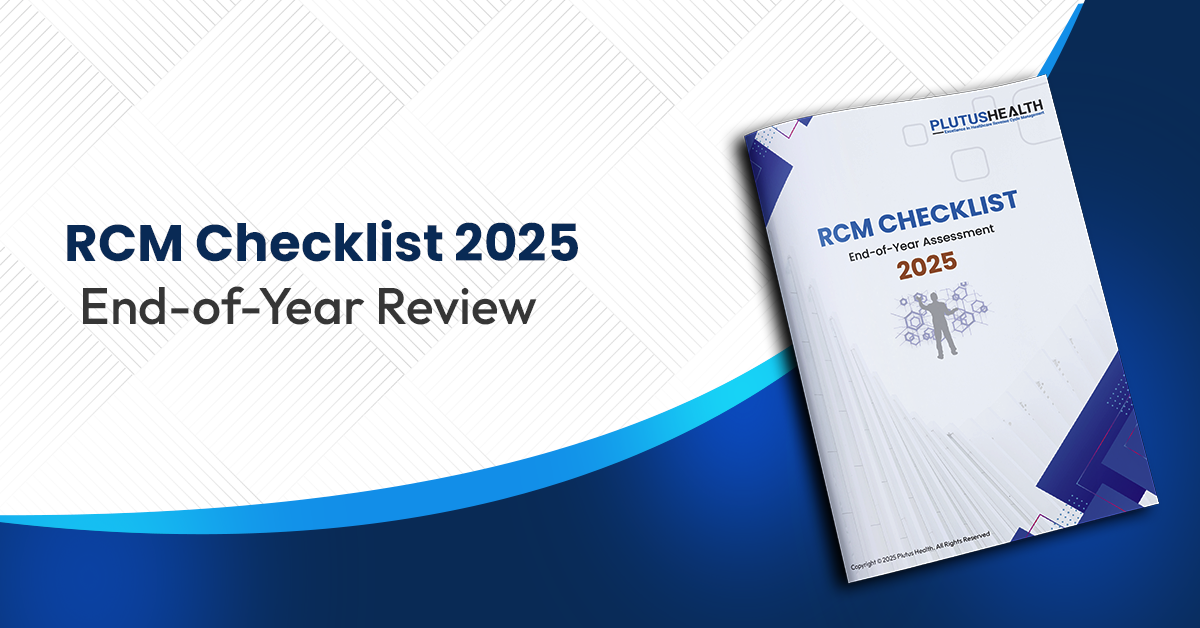The Surprising Benefits of Robotic Processing Automation in Healthcare RCM
Would you believe that one simple addition to your revenue cycle management strategy could increase your revenue and clean claims percentages while decreasing your overhead costs?
It might sound too good to be true, but it’s not. The future of healthcare revenue cycle management is here, and it’s come in the form of robotic process automation.
What is robotic processing automation, and how can it help you?
Robotic processing automation is a software robot used in revenue cycle management to automate the payment posting and processing of claims to secure a higher revenue percentage per claim.
What are the top 4 advantages of using robotic process automation in healthcare revenue cycle management?
Increase Your Clean Claims Percentage
Because robotic process automation is a digital employee, you’ll notice that consistency is easy to maintain. Plus, due to the elimination of human error using robotic processing automation, your clean claims percentage will increase exponentially.
Process Claims Around The Clock
Every hour that goes by without a processed claim is an hour that stands between a provider and his revenue. Practices that choose to use a robotic processing automation will enjoy faster processing because their bots don’t ever need to take lunch breaks or bathroom breaks. Plus, there’s never a clock in time, clock out time, or paid time off for robotic processing automation software; it works around the clock to ensure your practice or lab brings in revenue faster than ever before.
Track The KPIs That Matter Most To You
Every practice has its own unique revenue cycle management challenges. Because of this, the most vital KPIs to each practice or lab will vary. Whether you’re struggling with a high rate of denials, a high number of days in AR, or low clean claims percentages, a robotic processing automation strategy in place can track and share that specific, important data with you.
Reduce Overhead Costs & Wasted Efforts
After implementing a robotic processing automation component, most practices and labs are pleased to learn that they can reduce the number of administrative employees needed. In addition to reduced overhead costs, a robotic processing automation component in your strategy ensures that your claims are completed correctly the first time around, saving you wasted time, money, and resources.
How should I implement robotic processing automation into my practice’s RCM strategy?
Providers tend to choose or implement a robotic process automation strategy based on whether the robotic processing automation is sold as a software or as a service.
Practices that opt to purchase robotic processing automation software should do so knowing that there could be a high learning curve for the product. Plus, purchasing robotic processing automation software means that the practice will still need full-time administrative personnel on staff to run and manage the software.
Busy practices that are interested in saving time and resources should consider partnering with a revenue cycle management firm that includes robotic processing automation software as a service as a part of their overall RCM success strategy.
Interested in learning how robotic process automation can strengthen your revenue cycle management strategy?
Connect with a Plutus Health representative today to learn how zeus, our robotic processing automation software offered as a service, can help your practice or lab eliminate human error, decrease overhead costs, and increase your revenue.
Liked the blog? Share it
FAQs


ABA providers are grappling with high staff turnover (up to 65%), rising burnout, administrative overload, and stagnant reimbursement rates. These challenges directly impact care continuity, clinical outcomes, and operational performance.


Operational inefficiency costs ABA teams up to 10 hours per staff member per week, contributing to burnout, denied claims, and longer accounts receivable (A/R) cycles. These inefficiencies ultimately result in reduced revenue and patient dissatisfaction.


Burnout leads to costly turnover, lower client retention, and decreased productivity. Recruiting and replacing a BCBA or RBT can cost up to $5,000 per hire, plus months of lost revenue and disruption to morale.


High-performing ABA organizations invest in clear career pathways for BCBAs and RBTs, align compensation with market benchmarks, and foster peer-led mentorship, flexible schedules, and wellness programs.


Automation tools like Plutus Health's Zeus streamline eligibility verification, denial management, and billing, reducing manual workloads by 5–10 hours weekly per clinician and improving clean claim rates by 95%.


Outsourcing revenue cycle management can improve collections, reduce denials by up to 30%, and free clinicians from billing-related admin tasks, resulting in better client care and financial outcomes.


One $200 million ABA network partnered with Plutus Health to automate eligibility and accounts receivable (A/R) processes. The result: $2M reduction in legacy A/R and a 97% Net Collection Rate.


By improving operational efficiency, investing in technology, and ensuring workforce stability, ABA leaders can align outcomes with reimbursement. Plutus Health supports this transition with scalable RCM and automation strategies.
FAQs


ABA therapy billing is the process of submitting claims to insurance or Medicaid for Applied Behavior Analysis services provided to individuals with autism or developmental disorders. It includes using correct CPT codes, proper documentation, and adherence to payer-specific policies.


Common CPT codes for ABA therapy in 2025 include:
- 97151 – Assessment and treatment planning
- 97153 – Direct therapy with the patient
- 97155 – Supervision and modification of behavior plan
- 97156 – Family adaptive training
- Always check with payers for any annual changes.


To bill Medicaid for ABA services, providers must ensure credentialing is complete, services are pre-authorized, and claims use the correct codes and modifiers. Medicaid requirements vary by state, so always follow state-specific billing rules.


Common ABA billing mistakes include:
- Incorrect or missing CPT codesplan
- Lack of documentation or treatment
- Uncredentialed providers rendering services
- Submitting duplicate or late claims


Without proper credentialing, providers can’t get reimbursed. Insurance and Medicaid require that BCBAs, RBTs, and organizations are credentialed and contracted. Delays in credentialing often cause revenue losses and claim rejections.
FAQs


CMS proposes a 2.4% increase in Medicare ASC payment rates, contingent on meeting ASCQR quality reporting requirements. Plutus Health helps ASCs meet these compliance benchmarks by integrating quality reporting data into RCM workflows, ensuring eligibility for full payment updates.


The ASC Covered Procedures List will expand by 547 procedures, including cardiology, spine, and vascular surgeries. Plutus Health supports expansion into new service lines by customizing RCM processes for high-acuity procedures, minimizing claim denials during the transition.


Site-neutrality narrows the payment gap with hospital outpatient departments, enhancing ASCs' cost-efficiency appeal. Plutus Health helps leverage this advantage in payer negotiations by providing performance dashboards and cost-justification analytics to secure stronger reimbursement terms.


Complex procedures increase denial risk and slow cash flow. Plutus Health's automation-first RCM model delivers 95%+ clean claim rates, reduces A/R days, and safeguards margins, even as your case mix becomes more complex.
FAQs


A hybrid RCM model combines in-house tasks like scheduling, intake, and patient communication with outsourced billing support for claims, denials, and A/R follow-up. Plutus Health enables this model with automation and expert teams.


Frequent CPT code updates, variable session lengths, high no-show rates, and sensitivity around patient collections make behavioral health billing uniquely challenging. Hybrid RCM helps strike a balance between compliance and patient care.


Tasks requiring patient interaction—like intake, eligibility checks, copay collection, and documentation—are best kept in-house, while backend processes can be outsourced.


Outsourcing denial management, claims scrubbing, and payment posting improves clean claim rates, reduces A/R days, and scales capacity without adding staff.


Plutus Health delivers 97%+ clean claim rates, AI-powered denial prediction, and 48-hour claim turnaround. Our hybrid RCM solutions provide behavioral health CFOs with visibility and control, while enhancing financial performance.
FAQs


Payment complexity, high out-of-pocket costs, increasing denials, and value-based care requirements are pushing providers toward more transparent, tech-supported payment systems.


Patients now act like consumers. They expect clear cost estimates, simple bills, digital payment options, and flexible financing.


AI, automation, and digital tools streamline estimates, reduce denials, support payment plans, and allow faster collections through mobile and online payments.


Complex billing questions, insurance confusion, and financial stress require a compassionate approach. Advocates guide patients and protect trust in clinical care.


Plutus Health supports providers with AI-driven denial prevention, predictive analytics, digital payment tools, patient financing, and a seamless platform, such as AnodynePay.


















































